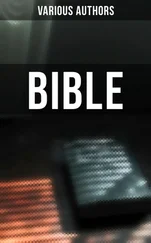" R. Jehudah saith: It must be wide enough, even if it be not sound enough. " R. Jehudah taught Hyya bar Rabh in the presence of Rabh: "It is sufficient, if the cross-beam be wide enough even if it be not sound enough." Said Rabh to him: "Teach him: 'It should be wide and strong enough.'" Did not, however, R. Ilai say in the name of Rabh: "It is sufficient, if it was four spans wide, even if it be not sound enough"? Four spans' width makes a difference.
" If the cross-beam be of straw or reed ," etc. What does the Mishna mean to teach us by this decree? That we regard certain things in a different light? This has already been taught us previously. In the former teachings, however, one certain kind of cross-beams was dealt with, namely, of wood; hence we might assume, that with straw or reed it might be different. For this reason we are given to understand that straw or reed may be regarded as metal.
" If it be crooked, it is regarded as straight ." Is this not self-evident? The Mishna wishes to impart to us the teaching of R. Zera as follows: "If the cross-beam was crooked only outside of the entry across which it was laid, or was crooked above twenty ells from the ground; or again, if the cross-beam was ten spans above the ground and the crooked part of it below the ten spans, the validity of the entry depends upon whether, if the crooked part of the cross-beam were removed, the straight part left would be distant three spans from the wall. If the distance is less than three spans the entry is valid, but if it be over three spans another cross-beam must be erected." Is this teaching also not self-evident? Nay; it is necessary that we be instructed to this effect, lest we presume that the crooked part on the outside of the entry carry with it the straight part on the inside and thus the entry is invalidated; hence we are given to understand, that such is not the case.
" If it be cylindrical, it is regarded as square ." For what purpose was it necessary to add this? This was taught us on account of the last clause in the Mishna, which states, that anything, measuring three spans in circumference is one hand in width.
MISHNA: The side-beams in question must be ten spans high, be their breadth and thickness whatever they may. R. Jose saith: "They must be three spans wide."
GEMARA: Shall we assume that the Mishna, which is rendered anonymously, is in accordance with the opinion of R. Eliezer, who holds that two side-beams are necessary? Nay; the side-beams in question refer to side-beams necessary for all entries. If this be the case, why did not the previous Mishna state cross-beams instead of "the cross-beam"? The above Mishna means to state, that the side-beams concerning which there is a difference of opinion between the sages and R. Eliezer should be ten spans high, be their breadth and thickness whatever it may. How much is meant by "whatever it may"? R. Hyya taught: Even the breadth and thickness of a thread of a Saraball." 1
A Boraitha states: "If one made a side-beam in one half of an entry, he has only a half of an entry." Is this not self-evident? We might presume that because one must not use the whole entry, hence the half must also not be used, and we are taught, that the half may be used.
Rabha said: "If one made a side-beam for an entry and it was three spans distant from the ground or three spans away from the wall, it does not count; and even according to R. Simeon ben Gamaliel who holds an object to be 'lavud' (attached) although four spans distant, the side-beam is of no use, because R. Simeon ben Gamaliel's opinion applies to an object which is four spans distant at the top; but at the bottom, where goats can pass through, a trifle less than three spans is the maximum distance."
" R. Jose saith: 'They must be three spans wide. '" Said R. Jehudah the son of R. Samuel bar Shila in the name of Rabh: "The Halakha does not prevail according to R. Jose either where brine is concerned 2or where a side-beam is in question." Said the schoolmen to him: "Dost thou confidently assert this?" and R. Jehudah answered: "Nay." Said Rabha: "By the Lord! He said this of a certainty, and we accepted it from him." Why then did he say "nay"? Because, we have learned elsewhere, that wherever R. Jose made an assertion, he always had good reason for it (and R. Jehudah did not wish to dispute with R. Jose).
Said Rabha bar R. Hana to Abayi: "According to whom, however, does the Halakha prevail concerning the side-beams?" He answered: "Go and observe the custom of the people" (which is as much as saying, that the breadth and thickness of a side-beam can be whatever it may).
It was taught: A side-beam, that was standing of itself, i.e. , that had not been especially erected, is, according to Abayi, valid, and, according to Rabha, not valid. If the side-beam was not depended upon to serve the purpose on the preceding day (before Sabbath), all agree, that it is not valid; but if it was depended upon for that purpose, Abayi declares, that it may be utilized, because it was depended upon on the preceding day, while Rabha holds that not having been erected for that purpose it must not be used. As for a partition, standing of itself, there is no difference of opinion, and all agree that even if it was not intended to serve as a partition, it may be used, and the reason they differ in the case of a side-beam is because each holds to his own theory: Abayi regards a side-beam as a partition, and a partition may be utilized under any circumstances, while Rabha regards a side-beam merely as a sign, and as such it must be especially prepared for the purpose before it may be used.
An objection was made: "Come and hear: If stones protruded from the fence around an entry and they were less than three spans apart, another side-beam for the entry is not necessary; but if they were three spans apart, another side-beam must be erected." Here the case is also, if the stones were so arranged purposely to commence with. If such be the case, is this not self-evident? We might assume that the stones were arranged in that manner with the intention of adding more to them, hence we are given to understand that this may be done.
Another objection was made: Come and hear: Rabh was sitting in a certain entry and R. Huna was sitting before him. Said Rabh to his servant: "Go and bring me a pitcher of water." Before his servant returned, the side-beam at the entry fell, and Rabh motioned to his servant to remain where he was. Said R. Huna to him: "Did not Master hold, that the tree standing in the entry may be regarded as a side-beam?" and Rabh answered: "That scholar is as a man who never understood a Halakha. Did we depend upon that tree to serve as a side-beam yesterday?" Now, we see, that according to Rabh, had the tree been depended upon on the preceding day to serve as a side-beam, it would have been valid. Shall we assume, that Abayi and Rabha differ concerning a side-beam standing of itself even if it was not depended upon on the preceding day, but if depended upon, both agree that it may be used. Nay; we cannot say this; because there was a pillar in the house of Bar Habo concerning which Abayi and Rabha differed all of their lives. (This is one of the six Halakhas that prevail according to Abayi, for generally Rabha is given precedence, as will be seen in the maxims of the Talmud.)
MISHNA: Side-beams may be made out of anything, even of such as are possessed of life. The latter, however, is prohibited by R. Meir. A living animal tied to the mouth of a grave in order to close it up communicates uncleanness (even after it has been removed). R. Meir, however, declares the animal clean. A letter of divorce for a woman may be written on a living animal, but R. Jose, the Galilean, pronounces the letter of divorce null and void (not legal). 1
If a caravan encamp in a valley and a fence be made around the camp out of the cattle's gear, it is permitted to carry things inside of the fence (on Sabbath), providing the fence be ten spans high and the open spaces therein do not exceed in extent the fence proper. Every open space which is ten spans wide is permitted (to be used as an entry), for it is considered as a door, but such open spaces as are more than ten spans wide must not be used.
Читать дальше












